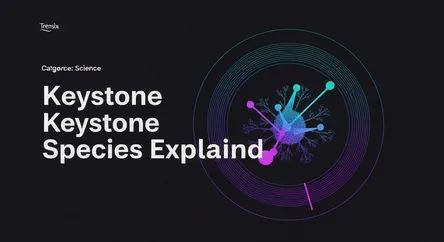Science
Keystone Species Explained

Discover keystone species, organisms that have a disproportionately large effect on their ecosystem, holding it together like an arch's keystone.
What is it?
A keystone species is an organism that helps define an entire ecosystem. Without its keystone species, the ecosystem would be dramatically different or cease to exist altogether. The term comes from the wedge-shaped stone at the apex of a masonry arch, which holds the other stones in place. While they may not be the most abundant species, their role is crucial. Classic examples include sea otters, which control sea urchin populations to protect kelp forests, and wolves, whose predation on herbivores prevents overgrazing and allows vegetation to flourish.
Why is it trending?
The concept of keystone species is gaining attention due to the growing global focus on biodiversity loss and ecosystem restoration. High-profile reintroduction programs, like the return of wolves to Yellowstone National Park, have provided dramatic, real-world examples of their impact, creating a 'trophic cascade' that reshaped the landscape. As scientists and policymakers grapple with climate change and habitat destruction, identifying and protecting keystone species has become a key strategy for conservation, making it a hot topic in environmental science.
How does it affect people?
The stability provided by keystone species directly benefits humans. They are essential for maintaining healthy ecosystems that provide critical services like clean air and water, crop pollination, and pest control. For instance, the kelp forests protected by sea otters are vital nurseries for commercial fisheries and help protect coastlines from erosion. The loss of a keystone species can trigger a domino effect, potentially leading to the collapse of industries, like fishing or tourism, that depend on those natural resources.